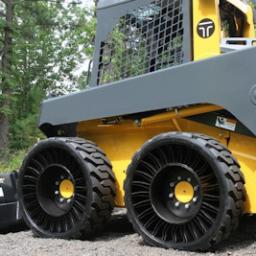
If you've never driven a Tweel, it might be time to try one (or four). It is basically an
airless tire held up with rubber spokes. Michelin says the spokes provide a unique energy transfer that reduces bounce associated with pneumatic tires while offering two to three times the wear life. And because the tires have no air, you never have to adjust the air pressure or risk getting a flat. Tweels are best suited for low-speed vehicles that don't have suspensions and are prone to flats, such as lawnmowers and skid-steer loaders used on construction sites, but Michelin isn't ruling out their use on other vehicles in the future.
Different companies make
tires that don't use air, including Bridgestone and Goodyear, and they go by different names: Non-pneumatic tires (NPT), airless tires, or run-flat tire are the most common. The first time I drove NPT tires was in 2014, I was floored by how the tires absorbed the bumps and seemingly rolled without noise or resistance. The product manager talked about how these "Terrain Armor" NPTs won't go flat (punctures) and won't get stuck in mud because the honeycomb design actually pushes mud out. Of course, they also have some drawbacks, such as noise and vibration at higher speeds.
Google isn't a fan of non-standard approaches to fast-charging Android phones over USB-C, like Qualcomm's Quick Charge 3.0, and
it wants manufacturers to fall in line. The newest Android Compatibility Definition document says it's "strongly recommended" that device makers don't support proprietary charging technology that modifies voltages beyond standard levels, or otherwise creates "interoperability issues" with standard USB charging. The company warns that later versions of Android might even require full interoperability with standard chargers.
This doesn't mean that you won't see fast charging. Both of Google's Pixel phones can top up quickly. However, it's evident that Google would like to fulfill USB-C's promise of cables and chargers that always work together. It doesn't like the idea that you might have to carry a specific charger for your phone to work as expected, or that a flaky cable might fry your charger, phone or both.
Large-screen smartphones, a.k.a. phablets, are bigger than ever-especially in terms of popularity. Industry analyst IDC says more smartphones with 5.5-inch or larger displays are being sold than ever before, accounting for 33 percent of the phones sold in the U.S. this year. And the people who buy phablets use their phones more than consumers with smaller-screened models. The following phablets are among
the best large-screen models in Consumer Reports' ratings.
* OnePlus 3
* LG V10
* Moto Z Droid Force
* Samsung Galaxy S7 edge
* Apple iPhone 7 Plus
With the exception of the iPhone 7, all of these models support rapid charging, which can replenish a near-dead battery to about 50 percent capacity in less than a half-hour.
IBM has
developed a prototype PCM - Phase Change Memomory - chip capable of storing three different values per cell instead of the normal 2. They also developed a new control mechanism capable of dealing with drift (which they say the new type of PCM chip does not experience).
I, for one, welcome our new
ternary overlords.
With a lot of phones having small internal storage and no means with which to expand it (SD cards are still uncommon), there is a constant battle to make space. There is cloud storage but WiFi internet access isn't always available. There are USB OTG (On The Go) adapters that can provide storage but it's not natively supported on many devices either.
Now we have something a little different, a wireless USB thumb drive from SanDisk, called the Connect Wireless Stick. It looks like any other simple little flash drive, the difference is the inclusion of a WiFi module and internal battery to set it up as a wireless access point, which you can log into with either a web browser, or a dedicated app for mobiles; all the data now becomes accessible over WiFi. You can stream movies easily and smoothly, but beyond about 10ft, the speed does start to drop off, and by about 30ft, it slows to a crawl.
While there are other wireless storage options, they are either limited to SD card sizes, or based on large spinning hard drives not rerally practical for truly portable use. You are most likely to get about 8 hours of wireless access time (actual data transfer) on a Connect Stick battery charge, so it's worth remembering to turn the wireless feature off when not in use (it does have an auto-sleep mode). Prices start at just $24 for 32GB, $38 for 64GB, $72 for 128GB and a $100 for the large 200GB version. Full review can be
found here.
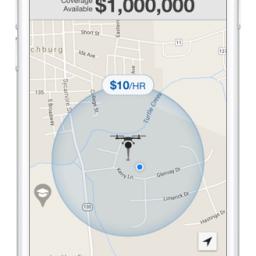
More people than ever have drones, but flying them also comes with risks such as losing your drone, damaging it, or worse, causing damage with it. As more of them take to the sky it's not unlikely that some form of insurance will eventually become required to be held by drone operators. A recently-launched company named
Verifly is getting an early start in that market by offering short-term "on-demand" insurance for recreational and commercial drone users. The insurance service starts at an $10 an hour and offers liability insurance for up to a quarter mile around the user. The system works through a downloadable app where the drone operator selects a flight area and receives hourly insurance, subject to some limitations. Right now the service is not offered in all states, but is available in 40 of the 50 states. The insurance currently covers drones with a maximum weight of up to 15 pounds and has a maximum liability limit of $1,000,000 of coverage per incident.
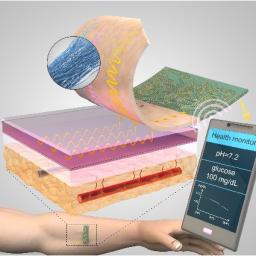
We already have smartphones, smart TVs and smart cars, so why not leverage technology to include smart stitches? Using
tiny sensors and electronics layered into fibers like cotton or various synthetics, super-small-scale electronics called "nano-scale sensors" and "microfluidics" are inserted into the sutures to monitor things like pressure, stress, strain and body temperature - as well as pH and glucose levels. This data from the sutures can transmit wirelessly in real time to a cellphone or computer, giving doctors a better idea of how a patient is healing and whether an infection is starting. Although they've only been tested in vitro, on rats' tissue, so further studies are needed, but researchers are confident with the results they've seen so far.
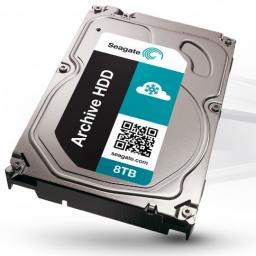
Seagate is pushing the boundaries on magnetic spinning media with a
new suite of 10TB hard drives - and is relaunching the familiar Barracuda brand name for the new product line. In 2013 the company unofficially retired the name, choosing instead to refer to its desktop drives as "Desktop HDD." Seagate is similarly rebranding its solid state-hybrid hard drives (SSHD) as FireCuda. These new launches come as the company is prepping for significant rounds of layoffs. Seagate has previously announced plans to fire roughly 8,100 people over the next 12 months, or 14% of its current global workforce. The company also plans to build 20 million fewer hard drives per quarter, down 33%.
These new 10TB drives don't appear to
use helium like other high-capacity drives, and they aren't based on
Shingled Magnetic Recording, either. These drives use more-conventional perpendicular recording, which means they won't take a performance hit when writing data, though still certainly no match for the solid-state competition. These also aren't the largest capacity hard drives available, either. If you've got the money to spend,
Samsung sells a 14TB SSD for upwards of $5,000.
The last audio cassette company in the country held on tight as its former competitors abandoned cassettes for CD production. Now that analog has begun to make a comeback, the National Audio Company, or NAC, owns its market and
is making more cassettes than ever before. When everyone jumped on the CD boat in the late 90s, NAC wasn't hurt because its customers were mostly spoken-word performers and people just buying blank media. So the company began slowly buying and rehabbing its competitors' equipment. "We were preparing ourselves to pick the music market up when it came back, and that's exactly what happened." Now NAC is making cassettes for Metallica, a special release of the Guardians of the Galaxy soundtrack, and what looks like countless basement recordings from smaller bands.
Banking so heavily on retro nostalgia is tricky, because what's retro and what's just old changes fairly often. Watch
the full video, from Bloomberg.
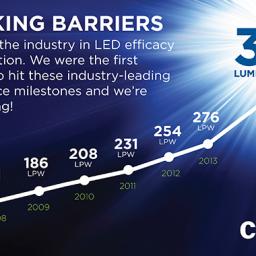
Cree's newly announced XP-G3 model of LED delivers 31% more lumens (lm) and 8% higher lm/W than its predecessor. Offering
over 205 lm/W at 350mA, this marks the first time commercially-available LEDs have exceed the efficiency of low-pressure sodium lamps, commonly found in municipal streetlights. OrangeTeK has already announced they are designing a new model of streetlight with XP-G3 LEDs. In practice, however, it's likely that most users of XP-G3 LEDs will run them at higher power with reduced efficiency, rather than install five times as many LEDs, due to price. Any efficiency improvements are good news, however, as numerous cities have already installed LED streetlights, and many more have plans in the works. This seems to be motivated by the whiter appearance of LEDs compared to sodium lights, which is ironically the major source of
opposition from the public, who complain about LED streetlights keeping them up at night, among other concerns.
Philips had previously demonstrated 200lm/W LEDs, and
claimed they'd be available to consumers by 2015, but a search of current products only reveals far less-efficient models. The XP-G3 is available for order right now. Cree has previously demonstrated LEDs in the lab that deliver
up to 303 lm/W, which is half-way to the maximum theoretical efficiency of this technology. Estimates are that as much as one quarter of the world's electrical consumption is used for lighting. Most consumers could see significant savings just by switching to florescent or LED lights in the first place. About
50 percent of lights sold in the US are halogen incandescents, which are only one quarter as efficient as LEDs, have far shorter operational lifetimes, and cost about one quarter as much.
 If you've never driven a Tweel, it might be time to try one (or four). It is basically an airless tire held up with rubber spokes. Michelin says the spokes provide a unique energy transfer that reduces bounce associated with pneumatic tires while offering two to three times the wear life. And because the tires have no air, you never have to adjust the air pressure or risk getting a flat. Tweels are best suited for low-speed vehicles that don't have suspensions and are prone to flats, such as lawnmowers and skid-steer loaders used on construction sites, but Michelin isn't ruling out their use on other vehicles in the future.
If you've never driven a Tweel, it might be time to try one (or four). It is basically an airless tire held up with rubber spokes. Michelin says the spokes provide a unique energy transfer that reduces bounce associated with pneumatic tires while offering two to three times the wear life. And because the tires have no air, you never have to adjust the air pressure or risk getting a flat. Tweels are best suited for low-speed vehicles that don't have suspensions and are prone to flats, such as lawnmowers and skid-steer loaders used on construction sites, but Michelin isn't ruling out their use on other vehicles in the future. 


